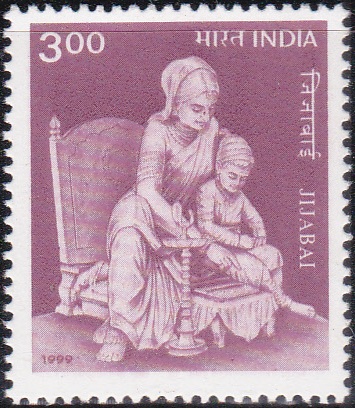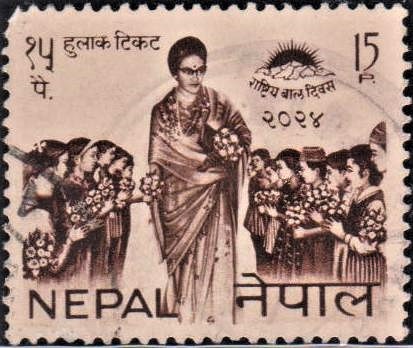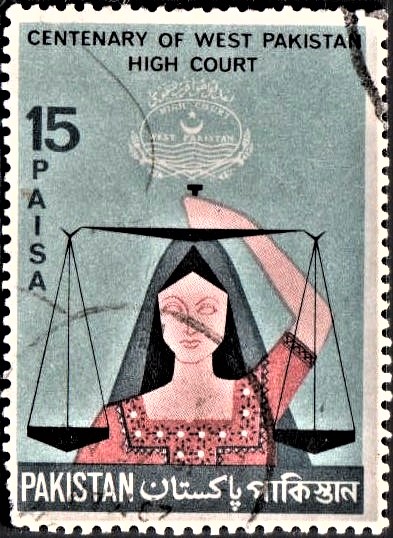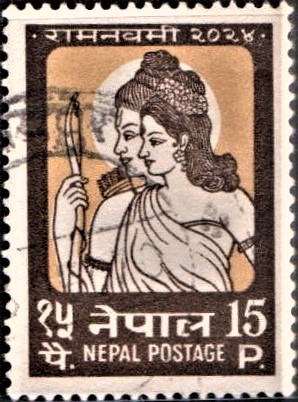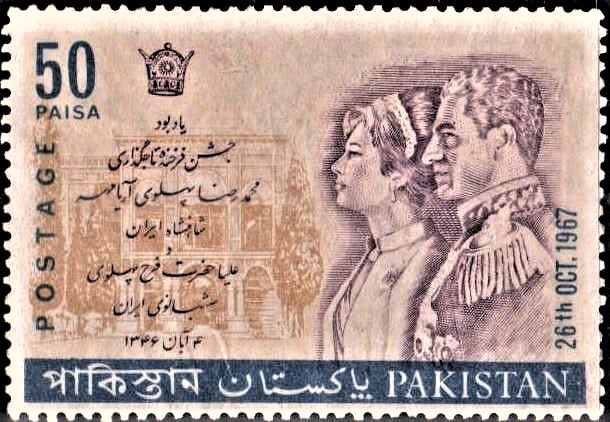
Pakistan on Coronation of Shahinshah Aryamehr & Farah Pahlavi of Iran
A commemorative postage stamp on the Coronation of Shah Mohammed Riza Pahlavi and Empress Farah of Iran :
 Issued by Pakistan
Issued by Pakistan
Issued on Oct 26, 1967
Issued for : To commemorate and perpetuate the memorable event of the coronation of His Imperial Majesty Mohammad Reza Pahlavi, Aryamehr Shahinshah of Iran and Her Imperial Majesty Empress Farah Pahlavi being held on the 26th October, 1967, the Pakistan Post Office is issuing a stamp on that date. The ceremonies would be held at the Gulistan Palace, Tehran and an official proclamation declaring his Imperial Highness Crown Prince Reza as heir to the Iranian throne would also be made the same day. In Pakistan, we are fully conscious of the significance of this coronation and we all fully share the rejoicings of our Iranian brethren, on this auspicious occasion.
The commemorative postage stamp would bear the portraits of Their Imperial Majesties with the Gulistan Palace in the background and would be superscribed with the following inscription in Persian. Its translation is also given below.
“To commemorate the auspicious coronation ceremony of Mohammad Reza Pahlavi Aryamehr, Shahinshah of Iran and Her Imperial Majesty Farah Pahlavi Shahbanou of Iran, 26th October, 1967”.
Design : The profile portraits of Their Imperial Majesties the Shahinshah and the Empress of Iran appear at the right of stamp. To the left of the portraits appears the Persian text surmounted by the Imperial Crown. The portraits, Imperial Crown and Persian text are printed by Intaglio process in purple, Gulistan Palace appears in orange as background. The word “Pakistan” in Bengali, Urdu and English appears in reverse in the blue panel at the bottom. Above the panel the word “Postage” and the date of Coronation “26th October, 1967” printed vertically in blue, appear at the left and right sides respectively of the stamp. The denomination “50 Paisa” appears in top left corner printed in Blue.
Type : Stamp, Postal Used
Denomination : 50 Paisa
Colour : Purple, Orange and Blue
Size of Stamp : 50.8 x 35.2 mm
Size of Print : 47.8 x 32.2 mm
Perforation Gauge : 13 x 13 (c)
Format : Horizontal
Quantity Printed : 25,00,000
No. of Stamps in each sheet : 50
Process of Printing : One Colour Intaglio and two Colours Litho
Printers : The Pakistan Security Printing Corporation Ltd., Karachi
About :
- His Majesty was born in Tehran on October 26, 1919 and officially proclaimed Crown Prince on the coronation of his father late Reza Shah the Great, founder of the Pahlavi Dynasty, on April 24, 1925.
- At the beginning of World War II Reza Shah the Great abdicated in favour of his son who on September 16, 1941, was sworn in as Mohammad Reza Shah Pahlavi the Shahinshah of Iran. Thus at the age of 22 he took over the reigns of the Government at a very critical period.
- After the termination of war, the country was in a state of near anarchy. It took the young Shahinshah the first twelve years of his reign to set the house in order and to restore political and social stability. Since 1953 Iran has been making steady and consistent progress which has revolutionised the country’s social and economic structure under the leadership of His Imperial Majesty. Outstanding amongst his reforms is the White Revolution of the Shah and the People, which has liberated the peasants from the yoke of the feudal lords; has given the workers due share in the profits of factories; has eliminated deficiencies leading to election malpractices; has ensured equal rights for women; has paved the way for eradication of illiteracy; has helped to promote public health; and has led to prompt administration of justice. His Imperial Majesty took another great historic step to eradicate illiteracy from the world and donated a sum of $ 700,000 to the Special Fund created with the U.N.O. for this purpose.
- His Imperial Majesty the Shahinshah Aryamehr is as much loved and honoured in Pakistan as in Iran. The sentiments of the Iranian people and the affection which the Shahinshah bears for the Pakistani nation are but too evident. We can never forget the sympathy of our Iranian brethren and the support and moral and material assistance rendered by the Shahinshah and the Iranian Government at the critical juncture when India led a dastardly surprise attack on Pakistan in September, 1965. His Imperial Majesty’s several visits to this country which have brought him closer to our hearts, and the return visits of President Ayub Khan to Iran have further cemented the ties of friendship between the two Heads of States, between the two governments and between the two peoples who have common heritage, common ideas and common traditions which dictate the necessity of having common purpose and co-operation, as envisaged in the RCD, so that we may both benefit by a lasting peace.
- The history of coronation in Iran dates back to the reign of the Great Achaemenian monarch Cyrus the Great founder of the Achaemenian Dynasty and also the Iranian monarchy, 2,500 years ago. He was the first Iranian King to be crowned and since then the tradition has continued allowing amendments suited to the taste and status of the ruler.
- During the first 100 years of the Persian Empire, the coronation ceremonies were held outside a temple in the presence of emissaries from all parts of the Empire. The King who was consecrated by the highest priest, put on the robe of Cyrus before the assembled people and promised to uphold the principles of faith, carry on his duties as a king honestly and faithfully and draw his strength from the unpretentious and simple people.
- Some of the kings of Iran never had a coronation while others celebrated the occasion with great pomp and show merely as an ostentatious expression of the greatness of the ruler. The crown was originally a diadem, a richly wrought band of silk sometimes in the form of a cap. Jewels were later added to it and the silk was replaced by gold. The Royal Crown became more elaborate in course of time.
- The Pahlavi Crown which bears the Darya-i-Noor diamond which is second only to the world famous Koh-i-Noor, was designed and executed on the pattern of the Sassanid Crown, under the orders of Reza Shah the Great, founder of the Pahlavi Dynasty.
- Since the end of the 18th century, the coronation of Iranian Monarchs have been held in Tehran. Over this period, a glittering array of coronation jewelry was gathered by the late Qajar Dynasty. Much of the present Crown Jewels is the heritage of the distant past, but a large part derives from the extraordinary love dreams of the Qajars, notably Fath Ali Shah, who fashioned some of the unique objects in the collection.
- The Peacock Throne is one such subject. It is set with Iranian stones, modelled on the original throne of the Great Mughals of India. The total number of gems set in the throne numbers 26,773. It was also used in the coronation of Reza Shah the Great in April, 1926. The Pahlavi Crown is inspired by the crown of one of the greatest of the Iranian monarchs, Shahpur the Great. It contains some 3,380 diamonds, five huge emeralds, two sapphires and some 368 pearls.
- The royal gold girdle used in the coronation has a huge 175 carat emerald for a buckle. The “all-conquering sword” of Nadir Shah which has become a traditional part of the coronation regalia is entirely covered with diamonds. The royal sceptre fashioned in jewelled gold is topped with a globe of the world bearing a crown. The coronation robe of the Pahlavi Dynasty is of the fine white silk elegantly embroidered with pearls.
- The Government and people of Pakistan, convey their deepest and sincerest felicitations to the Government and the people of Iran and to Their Imperial Majesties on this auspicious occasion and pray that they may continue to guide the destiny of their people to the zenith of glory and remain the instrument of cementing brotherly relations between the Muslims of the whole world generally and between Pakistan and Iran particularly.
- With the compliments of the Director General, Pakistan Post Office, Karachi.


